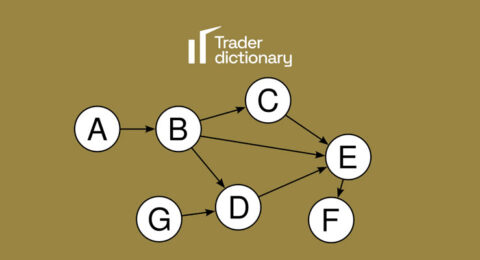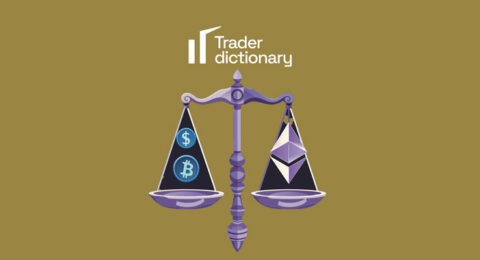What is Scalping?
Scalping is a trading strategy focused on profiting from minor price fluctuations in stock prices. Traders who employ this strategy can execute anywhere from 10 to hundreds of trades in a day, based on the belief that it’s easier to capture small movements in stock prices than large ones; these traders are known as scalpers. Many small profits can easily cumulate into significant gains if a strict exit strategy is utilized to prevent substantial losses.
During the scalping process, it’s always crucial to develop and adhere to a specific exit plan. This includes setting realistic small profit targets and establishing stop-loss orders to limit losses. For me, the key to scalping isn’t just about seizing every small opportunity but also knowing when to exit the market.
Pros and Cons of Scalping
The greatest strength of scalping lies in its ability to leverage small price changes without reflecting the overall trend of the commodity’s price for the day. This allows scalpers not to focus too much on fundamental factors, as they don’t play a significant role within a short timeframe.
Another benefit is that scalping minimizes market risk. The strategy is designed to limit losses from any stock by establishing tight leverage points and stop-loss orders. Moreover, scalping is a non-directional strategy, meaning the market doesn’t have to move in a specific direction for scalping to be effective; it works well for markets moving up and down. Many scalping strategies can also be easily automated within the trading system being used because they often rely on a series of technical criteria.
However, scalping isn’t without its drawbacks. One of the most significant limitations is that it requires a maximum number of trades, compared to other strategies. Opening a large volume of trades comes with higher transaction costs because you’re paying a commission on each trade. With scalping, you need to leverage a high volume of trades to generate sufficient profit; for some traders, the risk of only generating small profits isn’t worth it. Some scalpers execute dozens or hundreds of trades a day; this strategy can be very time-consuming and demands high levels of concentration.
Basics of Scalping
Scalping is a trading method extensively used by experienced traders, focusing on buying or selling with a large capital to profit from minor price fluctuations in the shortest holding time possible. This method is typically performed intraday. The primary goal is to buy or sell at the bid or ask price and then sell them a few cents higher or lower for a profit. Holding times can range from a few seconds to several minutes, and in some cases, up to several hours, ensuring that the position is closed before the trading session ends, usually by 8 p.m. EST.
During this process, I’ve learned that the success of scalping not only depends on identifying the right buying and selling moments but also requires a tight capital management plan. This includes using large leverage to maximize profits from small price changes and setting stop-loss orders to minimize losses.
Characteristics of Scalping
Scalping is a fast-paced activity suitable for agile and quick-reacting traders. It demands precision in timing and execution. Personally, when engaging in scalping, I utilize day trading buying power with a 4:1 leverage ratio to maximize profits with the largest number of shares in the shortest holding time possible. This requires focusing on short time frame interval charts such as one-minute and five-minute candlestick charts. Momentum indicators like stochastic, moving average convergence divergence (MACD), and the relative strength index (RSI) are commonly used.
Scalpers typically buy low and sell high, buy high and sell higher, or short high and cover low, or short low and cover lower. Scalping relies entirely on technical analysis and short-term price fluctuations. Due to the extensive use of leverage, scalping is considered a high-risk trading style.
Some common mistakes scalpers make include poor execution, inadequate strategy, not taking stop-losses, over-leveraging, late entries, late exits, and overtrading. Scalping generates high commissions due to the large number of transactions. A per-share commission pricing structure benefits scalpers, especially for those who often scale smaller pieces in and out of positions.
Psychology Behind Scalping

The psychology behind Scalping is not only a crucial part of applying this strategy but also one of the most significant challenges I have faced. Engaging in scalping requires a solid mindset and readiness to face high pressure. Every trading decision must be made in an extremely short time frame, demanding high concentration and quick reactions to market movements.
One of the biggest lessons I’ve learned is the importance of emotion control. In scalping, there’s no room for excessive greed or fear. You must learn to consistently accept small profits instead of waiting for a large, uncertain profit. This requires discipline, patience, and not letting minor market fluctuations disrupt your composure.
I’ve also realized that maintaining a positive and optimistic mindset is key to overcoming challenges. Every unsuccessful trade is a lesson to improve my skills and strategy. Instead of beating myself up over small losses, I’ve learned to view them as part of the learning and development process.
Conclusion
Scalping is not just a trading method; for me, it’s also a lesson in patience, discipline, and the importance of having a clear strategy. Over the years, I’ve realized that applying a strict exit plan and minimizing market exposure time is key to turning small profits into significant gains.
Scalping has taught me that success in trading doesn’t come from waiting for a big opportunity but from effectively seizing a series of small chances. It suits a wide range of traders, from beginners to experienced professionals, as long as they are willing to learn and apply a disciplined approach. Ultimately, scalping is not just a trading strategy but a trading style that reflects your patience and determination on the path to achieving success in the financial markets.









